CLASSIC IRON: JODY WEISEL’S 1974 HODAKA SUPER COMBAT 125
BY TOM WHITE
For a short period of time in late 1973, the Hodaka Super Combat was the fastest 125 motocross bike made. It was, unfortunately, a very short period of time! As Penton, Monark, Bultaco, Zundapp and CZ were wilting, the Japanese were focusing their attention on the incredibly popular 125 class. Hodaka got there first, thanks to its incredible following for the 100cc Super Rat, Hodaka had a built-in market for their 125 racer. The 1974 Super Combat was a spin-off of the trail-based 125cc Combat Wombat, which was spawned from the 125 Wombat enduro model, which was built on the success of the ubiquitous Super Rat 100. Unfortunately, the Super Combat’s dominance was short lived. It hit the showrooms first and was resoundingly applauded, only to be eclipsed in short order by the Honda CR125 Elsinore and strap-tanked YZ125.
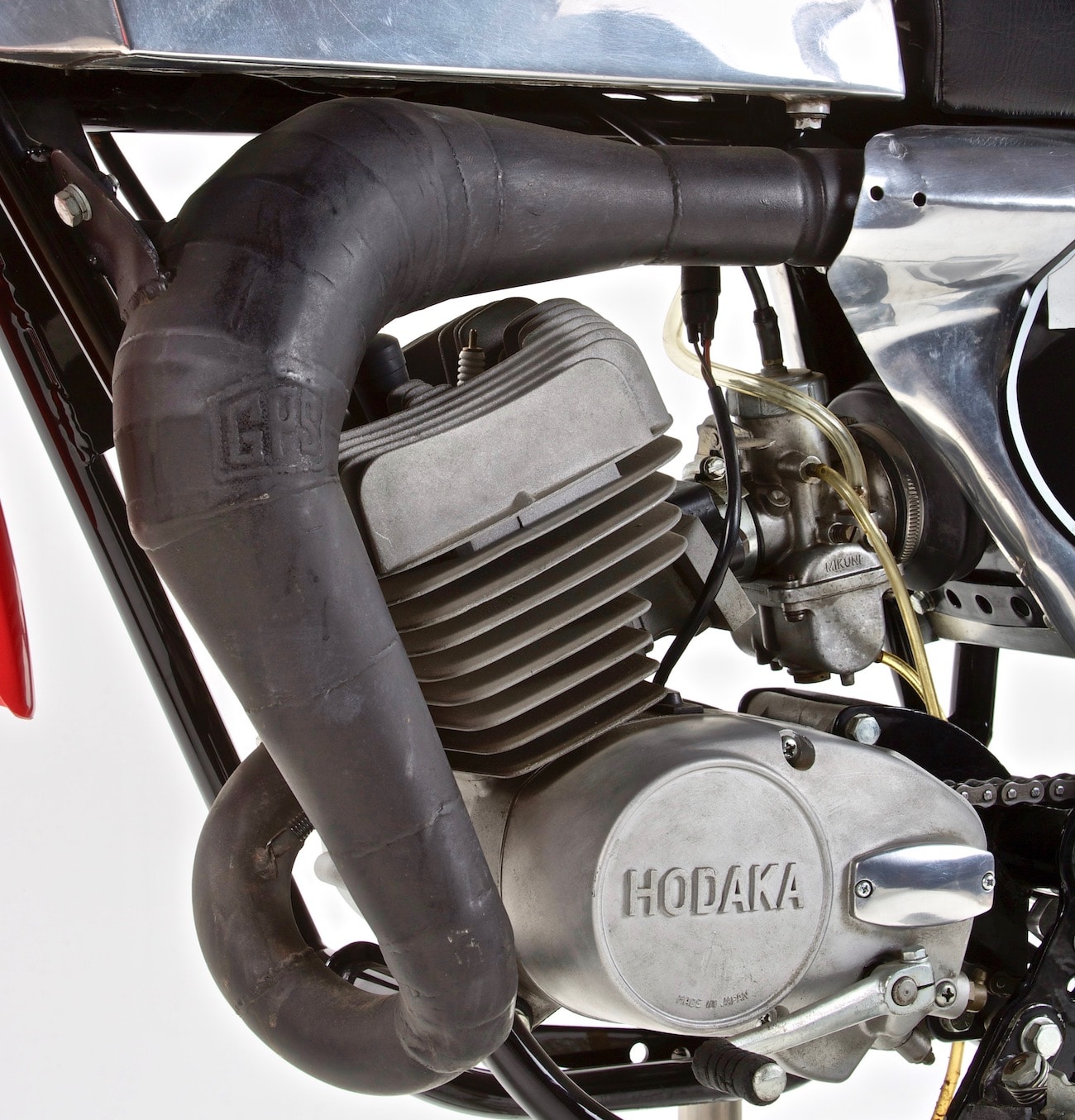 The Hodaka 125 engine was not as reliable as the 100cc Super Rat engine, but it did make solid power in 1974—but was soon swamped by the new generation YZ125 and CR125.
The Hodaka 125 engine was not as reliable as the 100cc Super Rat engine, but it did make solid power in 1974—but was soon swamped by the new generation YZ125 and CR125.
While the $900 Super Combat was the most advanced Hodaka ever made, it wasn’t built by a megabuck company with the finances to retool every year. When the CR125 and YZ125 leapfrogged over the Super Combat, the bell had tolled for the Oregon brand. It had been a great run. Hodaka had fueled the off-road motorcycle explosion of the late ‘60s and early ‘70s, selling 10,000 units a year, but by 1974 Hodaka’s loyal following had been lured away by Honda and Yamaha. Even Hodaka’s most famous riders, Tommy Croft, Bob Rutten and Cordis Brooks, were switching brands.
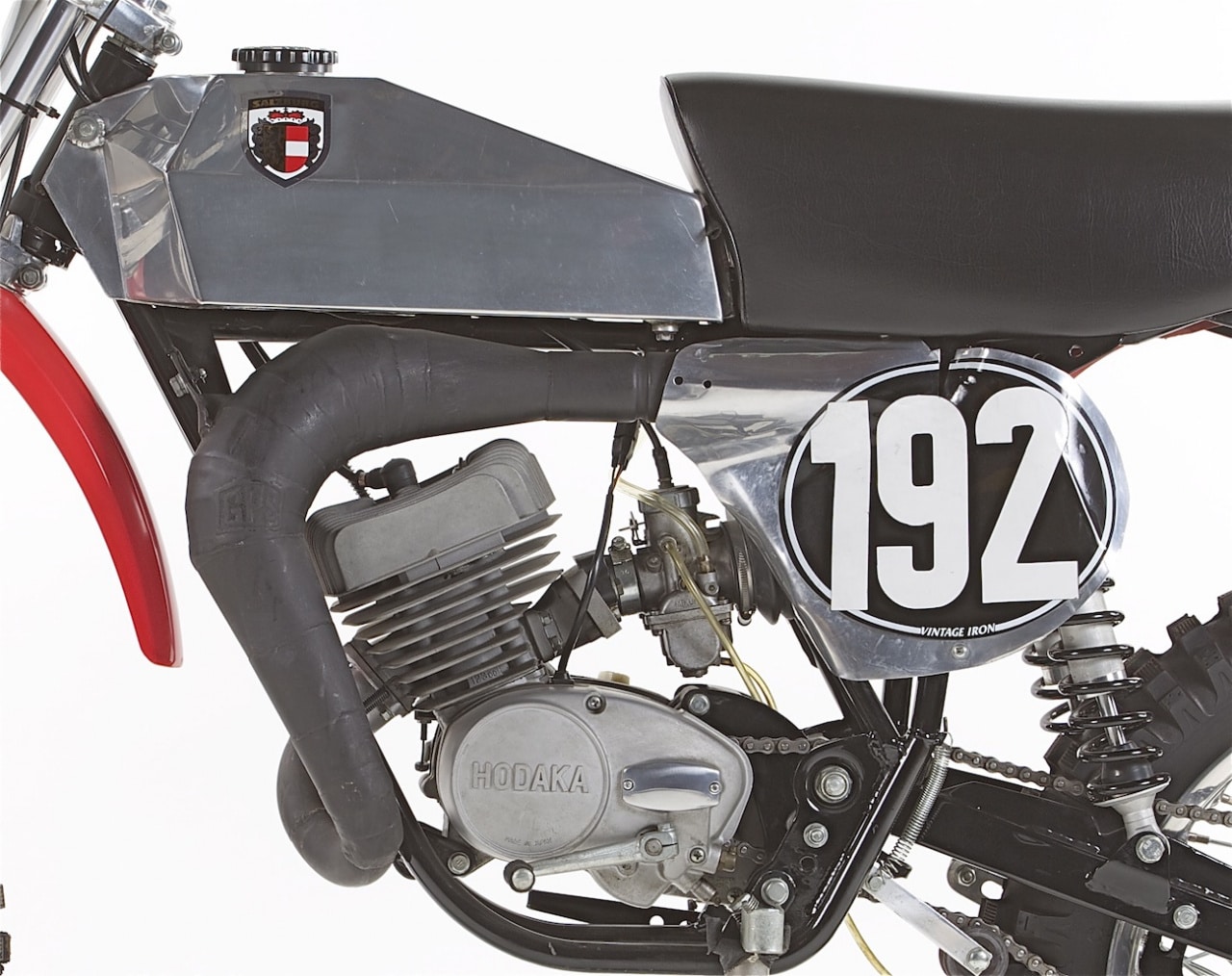 The ultra-tall seat looks odd 49 years later, but in 1974 lots of racers resorted to tall seats to raise the very low 1974 chassis and to add more suspension in the rough. A spring-loaded chain tensioner kept the chain from derailing in the rough.
The ultra-tall seat looks odd 49 years later, but in 1974 lots of racers resorted to tall seats to raise the very low 1974 chassis and to add more suspension in the rough. A spring-loaded chain tensioner kept the chain from derailing in the rough.
In the end, Hodaka executive Marv Foster encouraged test rider Jody Weisel to built a proof-of-concept Super Combat. Hodaka helped with engines, but the most of the bike was built in Texas and California (for Jody to race). Forty-nine years ago,
 Jody racing at the Austin Aquafest road race on his Hodaka raod racer. As AMA road race rules changed with three times with bigger displacements each time, Jody turned to tuner E.C. Birt to usher his 100cc engine, to a 125 engine and eventually to a 140cc engine (as the 100 class evebtually became the 200cc class. it still could have been biggers
Jody racing at the Austin Aquafest road race on his Hodaka raod racer. As AMA road race rules changed with three times with bigger displacements each time, Jody turned to tuner E.C. Birt to usher his 100cc engine, to a 125 engine and eventually to a 140cc engine (as the 100 class evebtually became the 200cc class. it still could have been biggers
Jody was part of a thriving Texas motocross movement that included Kent Howerton, Wyman Priddy, Steve Stackable, Jody Foust, Danny Doss, Jack O’Leary, Tim Riddle, Steve Wise, Jumpin’ Jack Hicks and Bobby Pickard. Jody had flown the Hodaka flag from the late 1960s in road racing and motocross in the 1970s and was even on the cover of Cycle News on an earlier version of his Super Combat (see below).
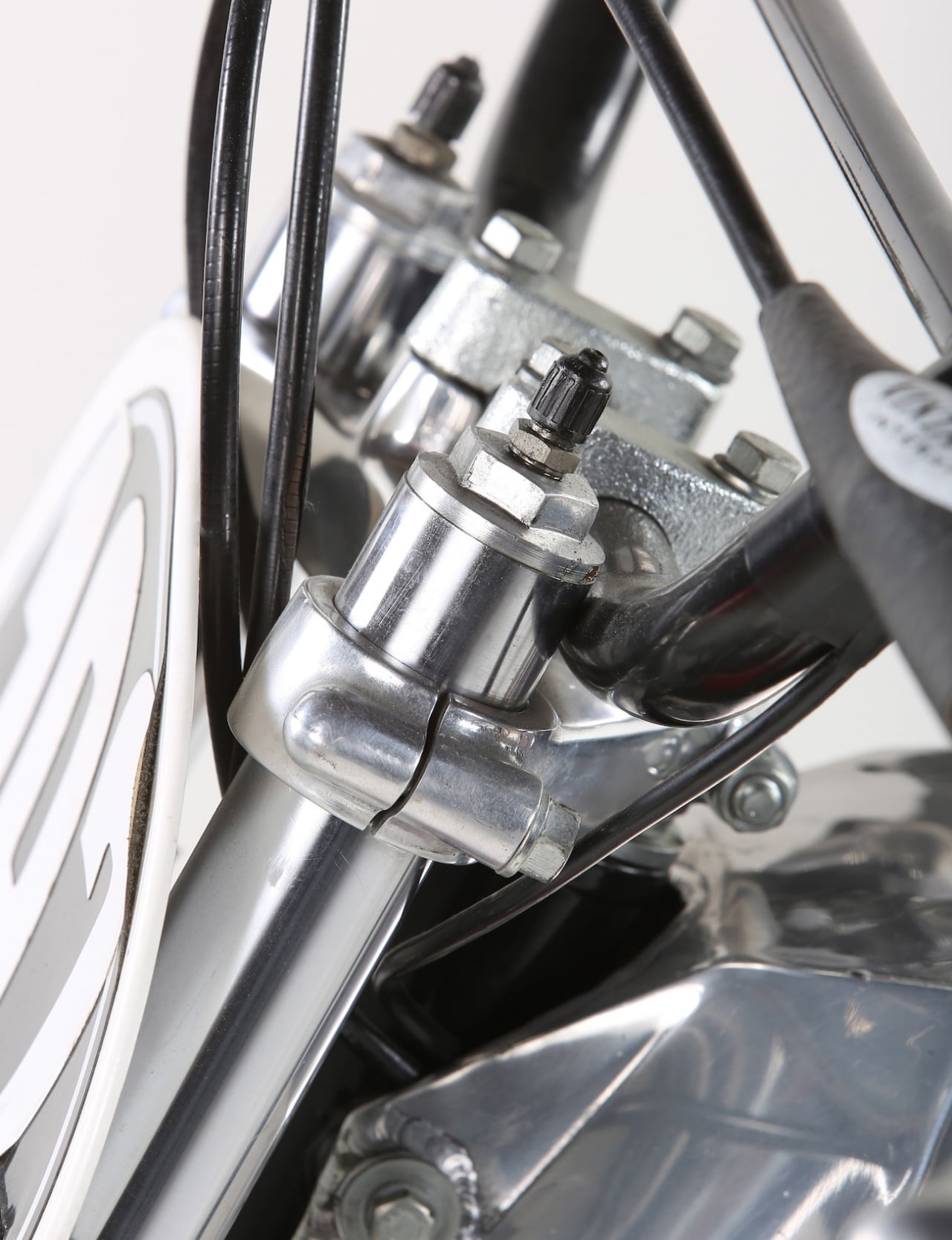 There were no springs in Jody’s 1974 Kayaba forks—just air. Nothing trick, the forks caps were drilled and Schaeder valves threaded in. These 36mm forks were a big upgrade over the stock 32mm forks.
There were no springs in Jody’s 1974 Kayaba forks—just air. Nothing trick, the forks caps were drilled and Schaeder valves threaded in. These 36mm forks were a big upgrade over the stock 32mm forks.
With modest support, Jody’s 1974 Super Combat was the most radical Hodaka 125 ever made (although Hodaka was working on a new prototype 125 in 1975 that Bob Rutten was testing, but it never saw the assembly line). The list of innovations on Jody’s Super Combat included a handmade Alex Steel aluminum coffin tank, a 3-inch longer Swenco swingarm, moved-up shock positioning, 34mm Kayaba air forks (the stockers were 32mm and used coil springs), cut and redesigned frame, aluminum airbox, GP Specialties up-pipe (with a stinger that exited under the seat), a reinforced frame (at the head tube, footpeg brackets and top shock mounts), spring loaded chain tension, aluminum side panels and a built-up seat (ala Maico).
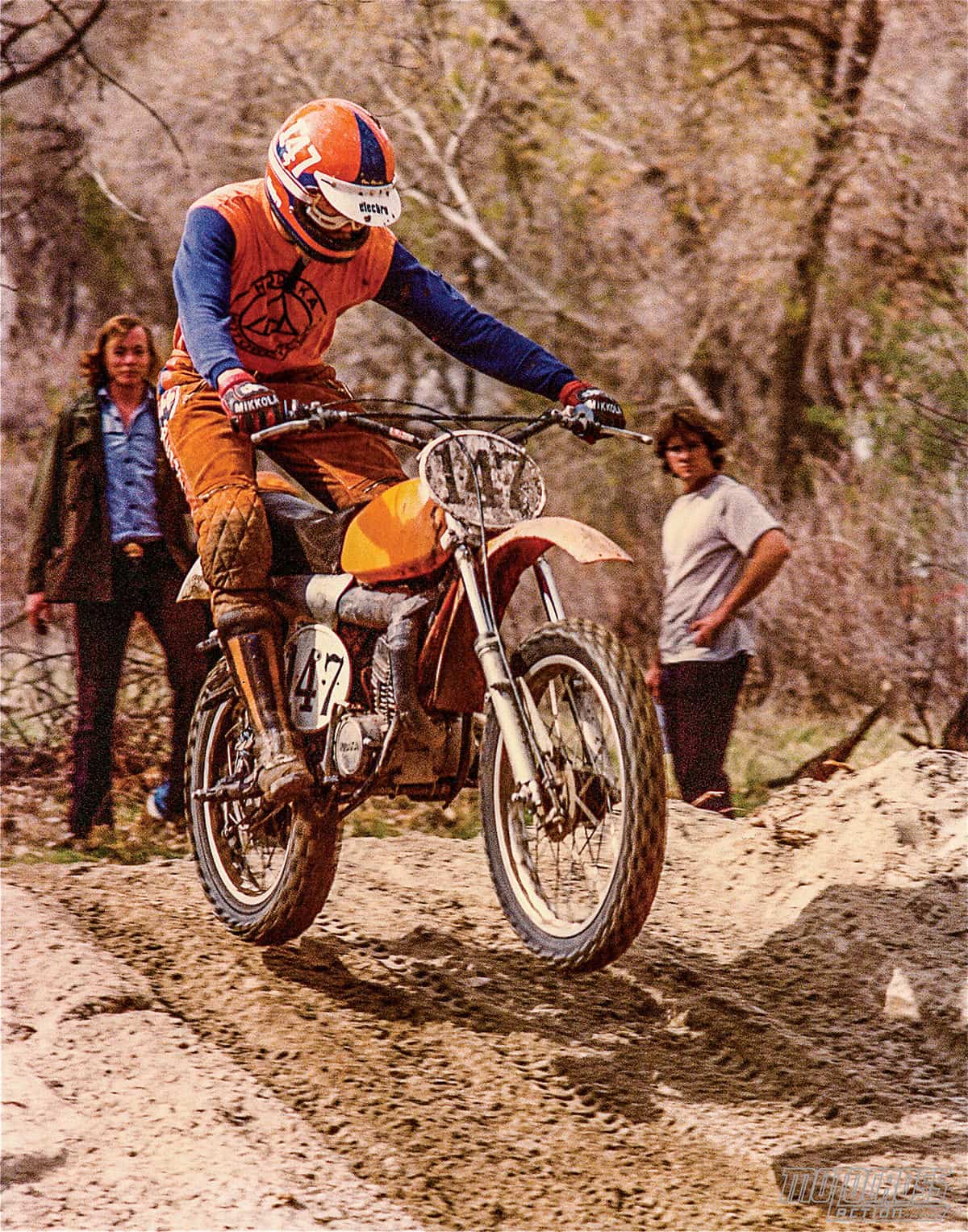
Bob Rutten tested the 1975 125 prototype, shown here winning the 1975 Soboba Grand Prix on it, before it went back to Oregon. It never saw production.
As with most Hodaka racers, Jody never raced his Super Combat after the 1975 season. He lent it to a young friend who didn’t have a bike. The kid raced with it for two years and then gave it back to Jody. Jody rolled it into his barn where it sat for three decades until the AMA Hall of Fame Museum asked if they could put it in the “Motocross America” exhibition as an example of American motocross ingenuity. After that it was moved to the late Tom White’s “Early Years of Motocross Museum,” where it is still on display.
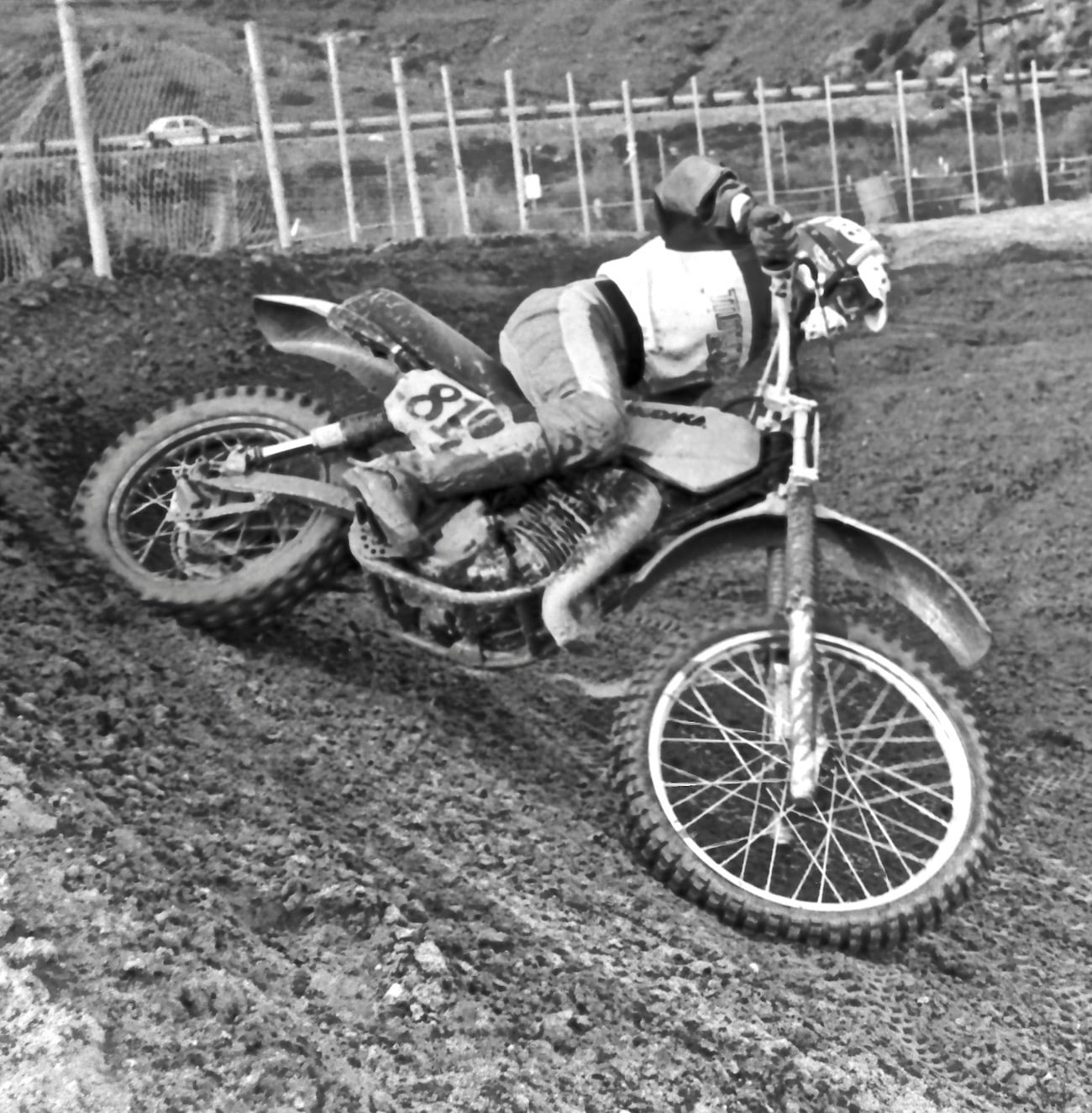 Lance Moorewood racing Jody’s 1977 Hodaka 250 Thunderdog at Indian Dunes. Note the extended bar mounts needed to pull the handlebars back towards the rider because of the ultra-long Thunderdog gas tank. The stock Thunderdog 250ED was very heavy, but Jody shaved off 20 pounds.
Lance Moorewood racing Jody’s 1977 Hodaka 250 Thunderdog at Indian Dunes. Note the extended bar mounts needed to pull the handlebars back towards the rider because of the ultra-long Thunderdog gas tank. The stock Thunderdog 250ED was very heavy, but Jody shaved off 20 pounds.
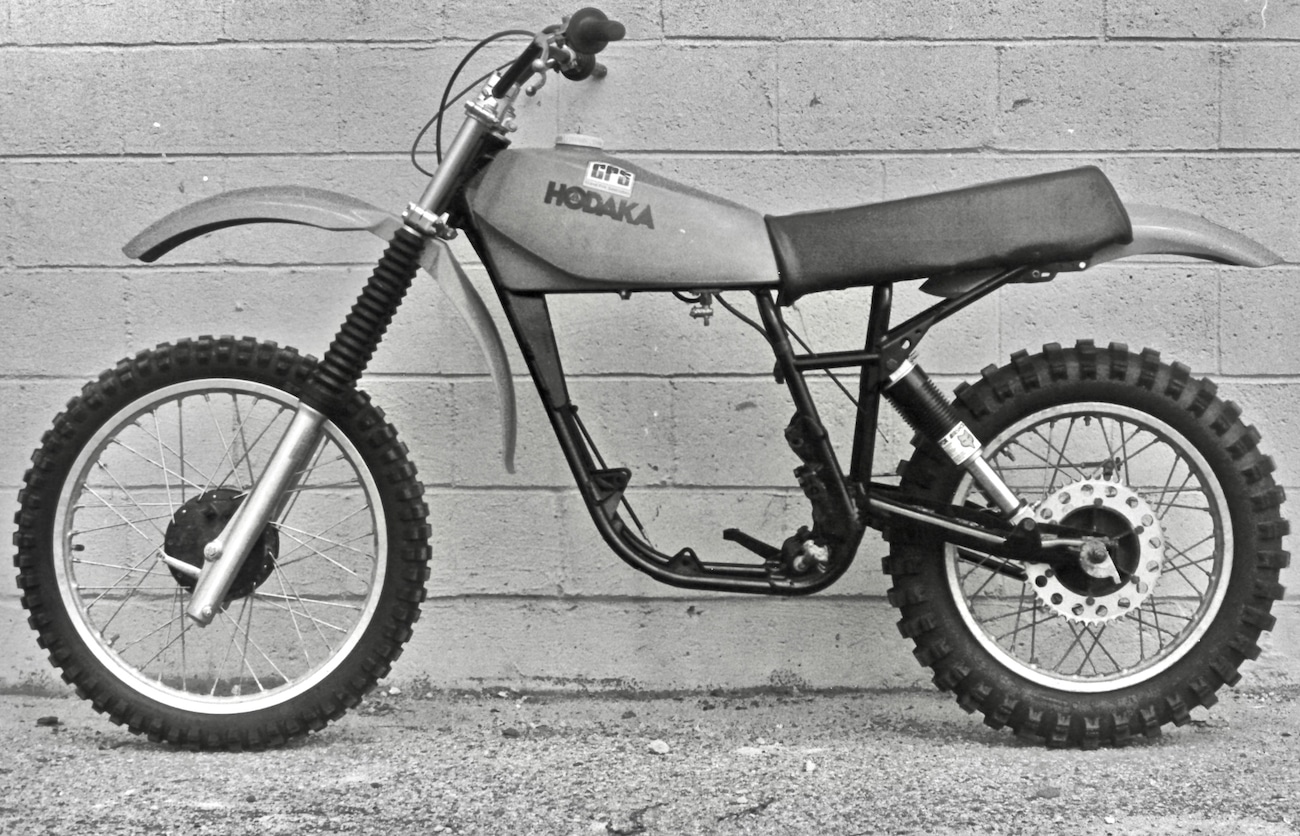 Grand Prix Specialties (GPS) did the welding on Jody’s Thunderdog chassis. The swingarm was later changed for a longer aftermarket aluminum swingarm (which was painted black to match the frame).
Grand Prix Specialties (GPS) did the welding on Jody’s Thunderdog chassis. The swingarm was later changed for a longer aftermarket aluminum swingarm (which was painted black to match the frame).
 When Jody finished the 250 Thunderdog project and sent it back to Oregon, it mysteriously disappeared during the time when Hodka was closing the company. It was never seen again.
When Jody finished the 250 Thunderdog project and sent it back to Oregon, it mysteriously disappeared during the time when Hodka was closing the company. It was never seen again.
Jody did one final project with Hodaka, even though he had moved to MXA in the winter of 1976, when he modified a 1977 Hodaka 250ED, better known as the “Thunderdog” trail bike into a motocross bike, with Kayaba front forks, Fox Airshox, aluminum swingarm, custom pipe and massive weight reduction. It worked well during testing in SoCal, but unfortunately the bike was shipped back to Oregon right before Hodaka folded up shop and went out of business. No one knows what happened to the Hodaka 250 project bike. It disappeared.
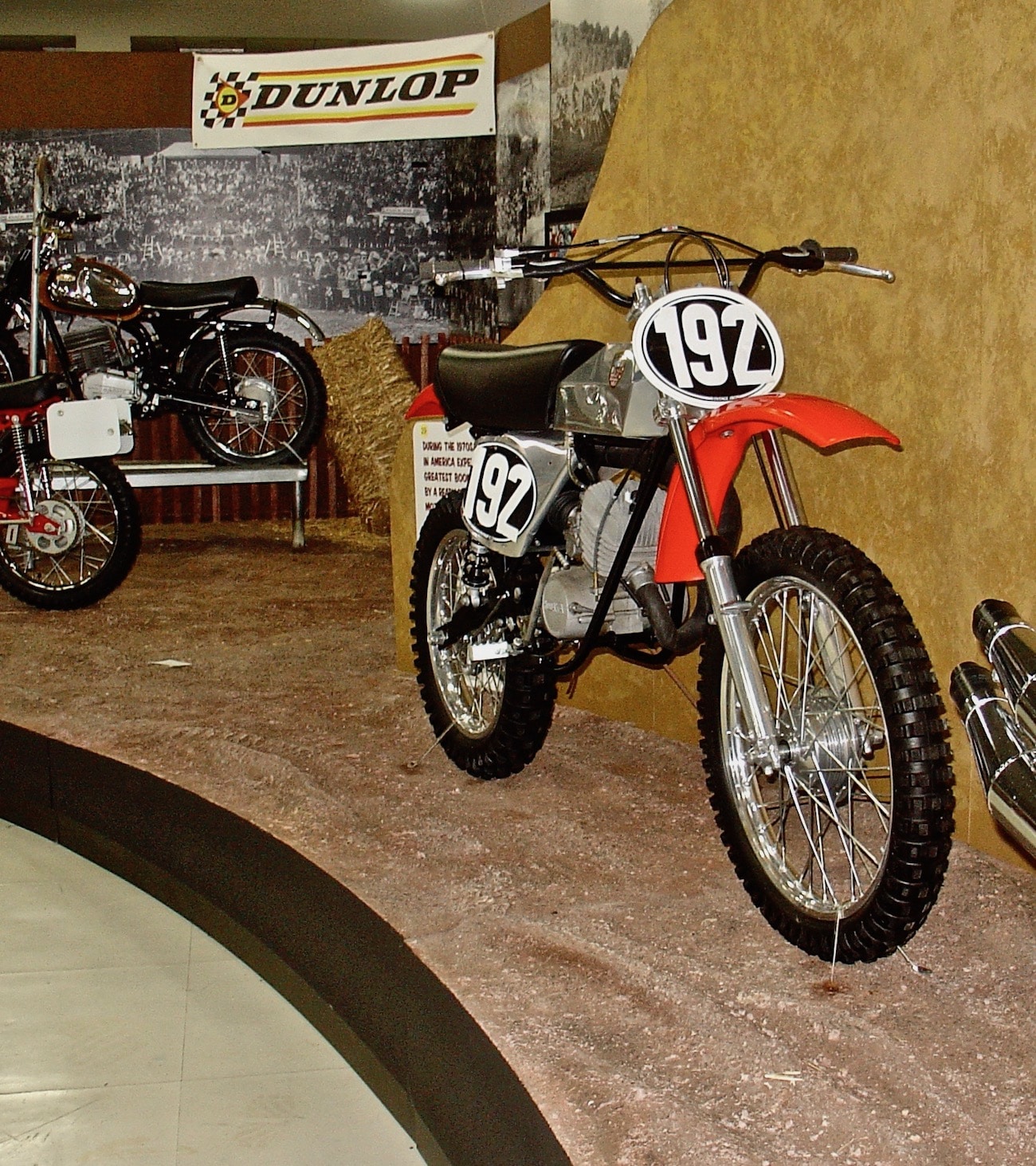 Jody’s 1974 Hodaka SuperCombat 125 at the AMA Hall of Fame “Motocross America” exhibition.
Jody’s 1974 Hodaka SuperCombat 125 at the AMA Hall of Fame “Motocross America” exhibition.
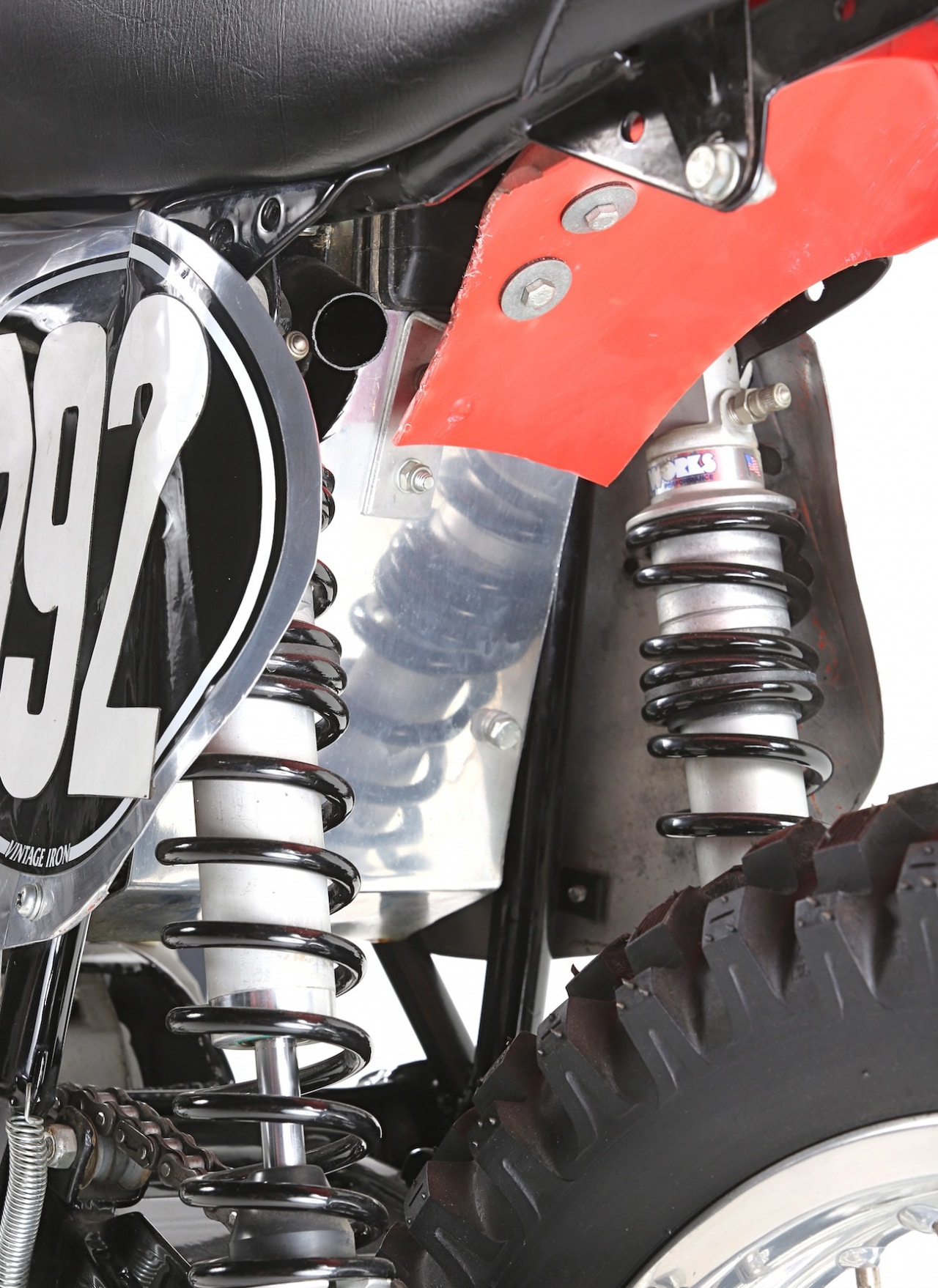 The exhaust stinger did not extend out the back of the bike—it barely cleared the aluminum side number plate. The silencer was welded inboard of the stinger about 8-inches. Note the dual-rate Works Performance shocks.
The exhaust stinger did not extend out the back of the bike—it barely cleared the aluminum side number plate. The silencer was welded inboard of the stinger about 8-inches. Note the dual-rate Works Performance shocks.
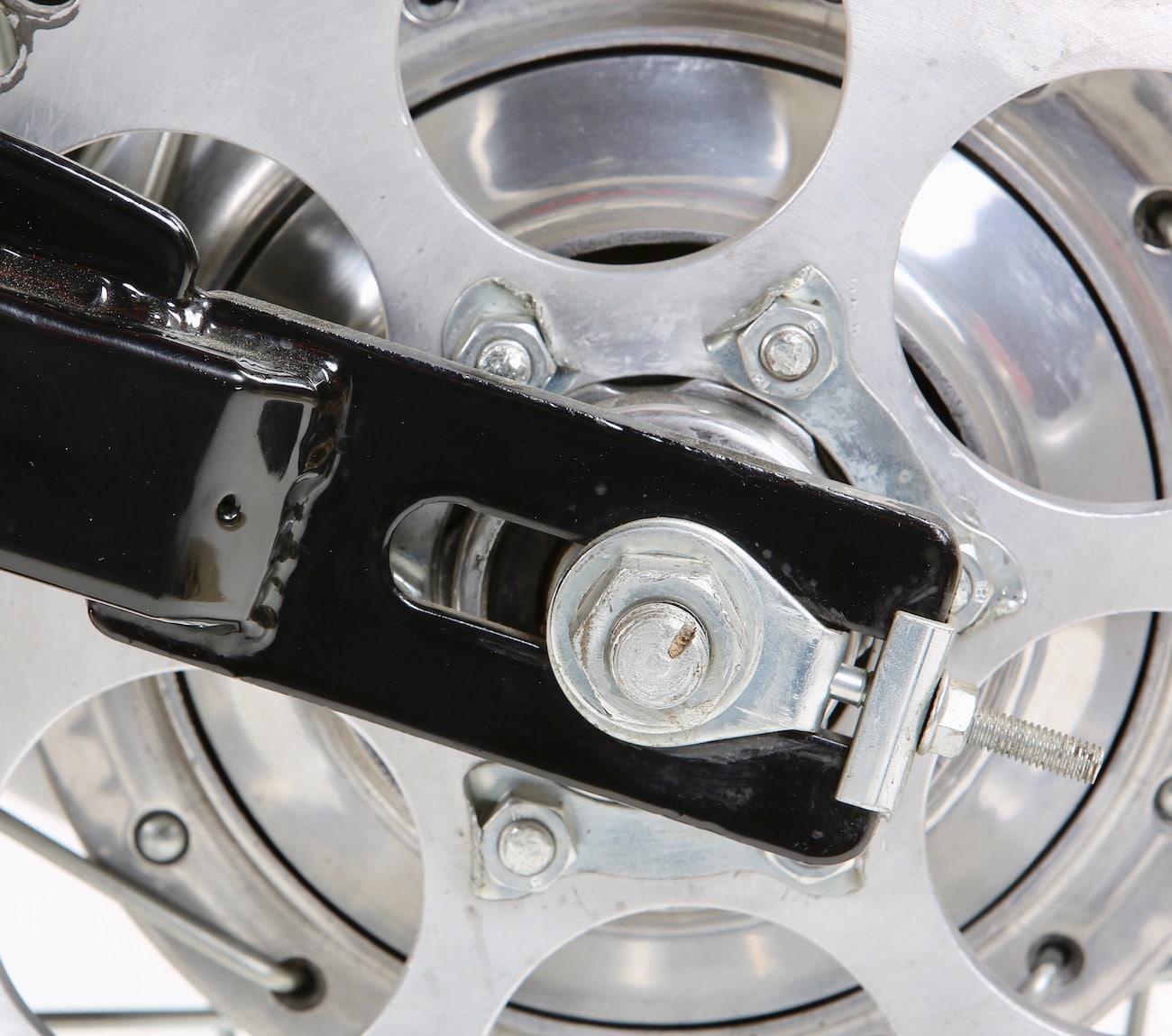 The Swenco swingarm extended the very short Hodaka wheelbase by three inches.
The Swenco swingarm extended the very short Hodaka wheelbase by three inches.
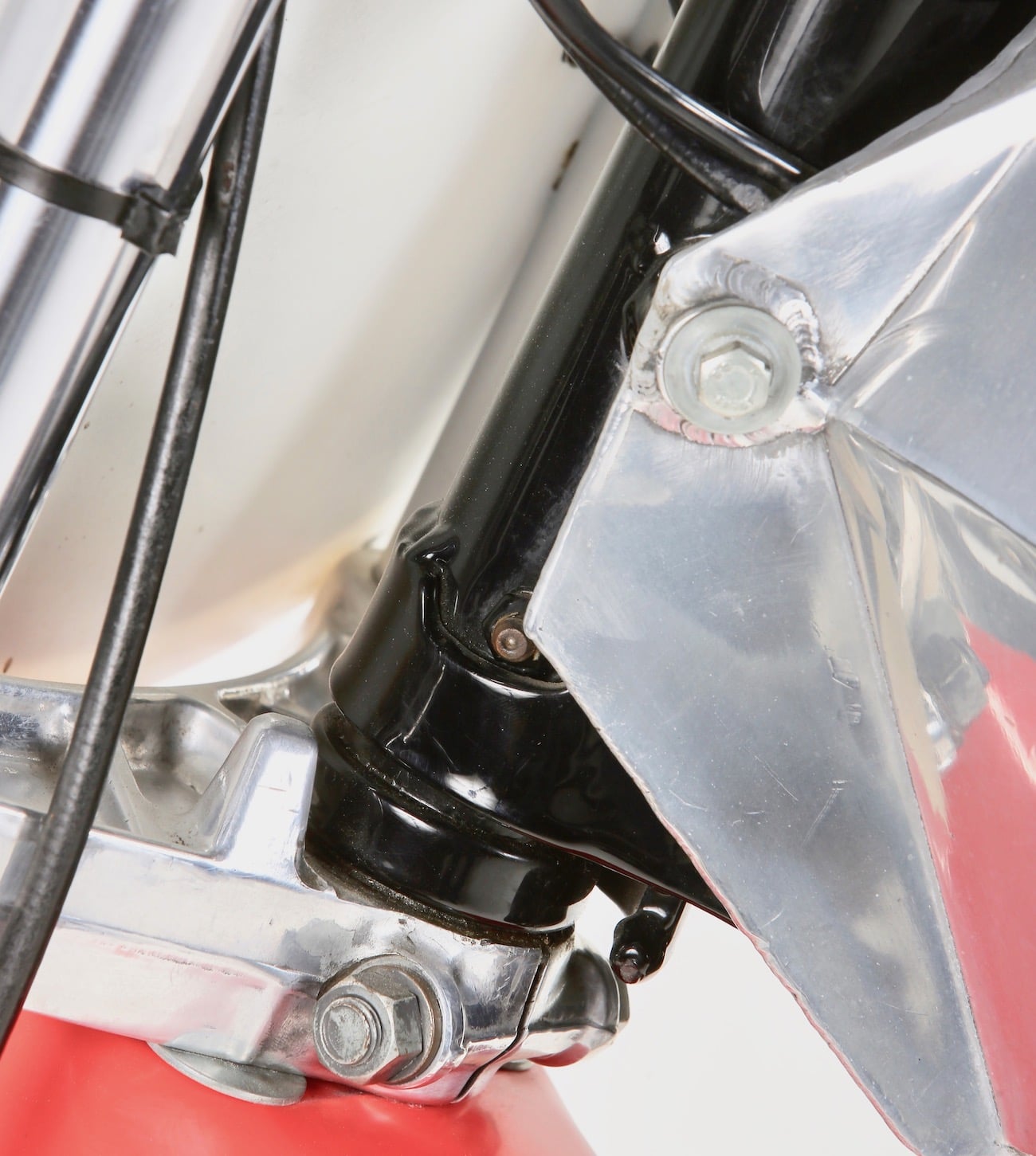 Frame breakage was an issue and Jody’s Super Combat frame had lots of gussetting added. Note the strap welded around the head tube and backwards towards the frame. Most of the frame was totally rebuilt.
Frame breakage was an issue and Jody’s Super Combat frame had lots of gussetting added. Note the strap welded around the head tube and backwards towards the frame. Most of the frame was totally rebuilt.
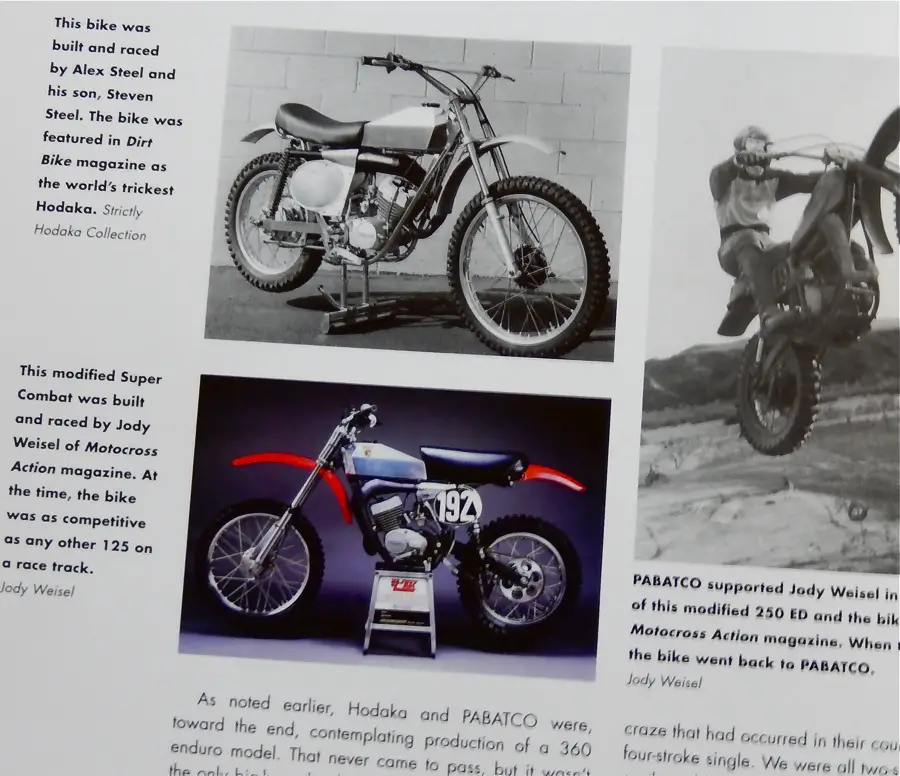
Jody’s bikes were in Ken Smith’s “Hodaka” history book.
 This is Jody, his dog and his 1974 Super Combat on the cover of the September 3, 1974, issue of Cycle News. It didn’t stay like that for very long. Note the steel rods welded to the bottom of the exhaust pipe to help keep the down pipe from being crushed.
This is Jody, his dog and his 1974 Super Combat on the cover of the September 3, 1974, issue of Cycle News. It didn’t stay like that for very long. Note the steel rods welded to the bottom of the exhaust pipe to help keep the down pipe from being crushed.
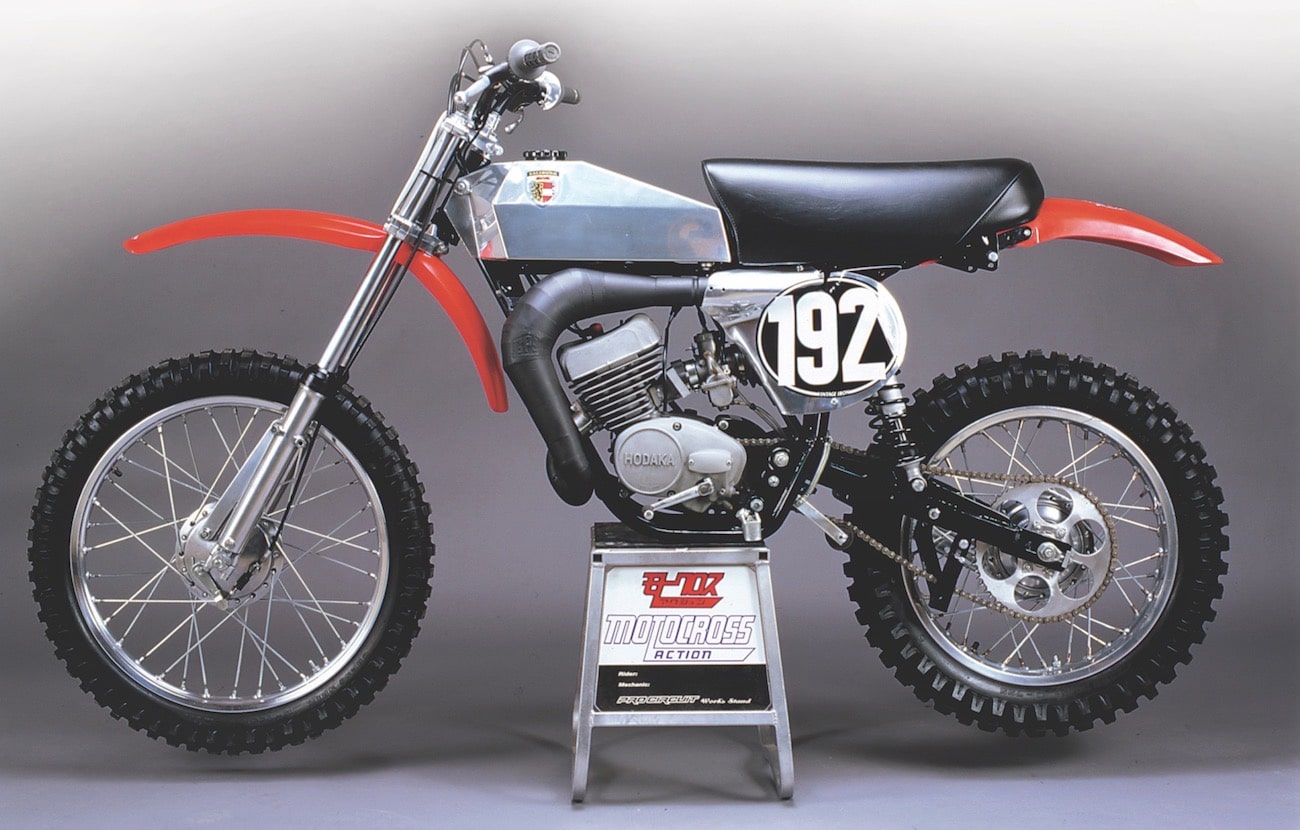 What Jody’s 1974 Hodaka 125 Super Combat looks like today in Tom White’s “Early Years of Motocross Museum.”
What Jody’s 1974 Hodaka 125 Super Combat looks like today in Tom White’s “Early Years of Motocross Museum.”


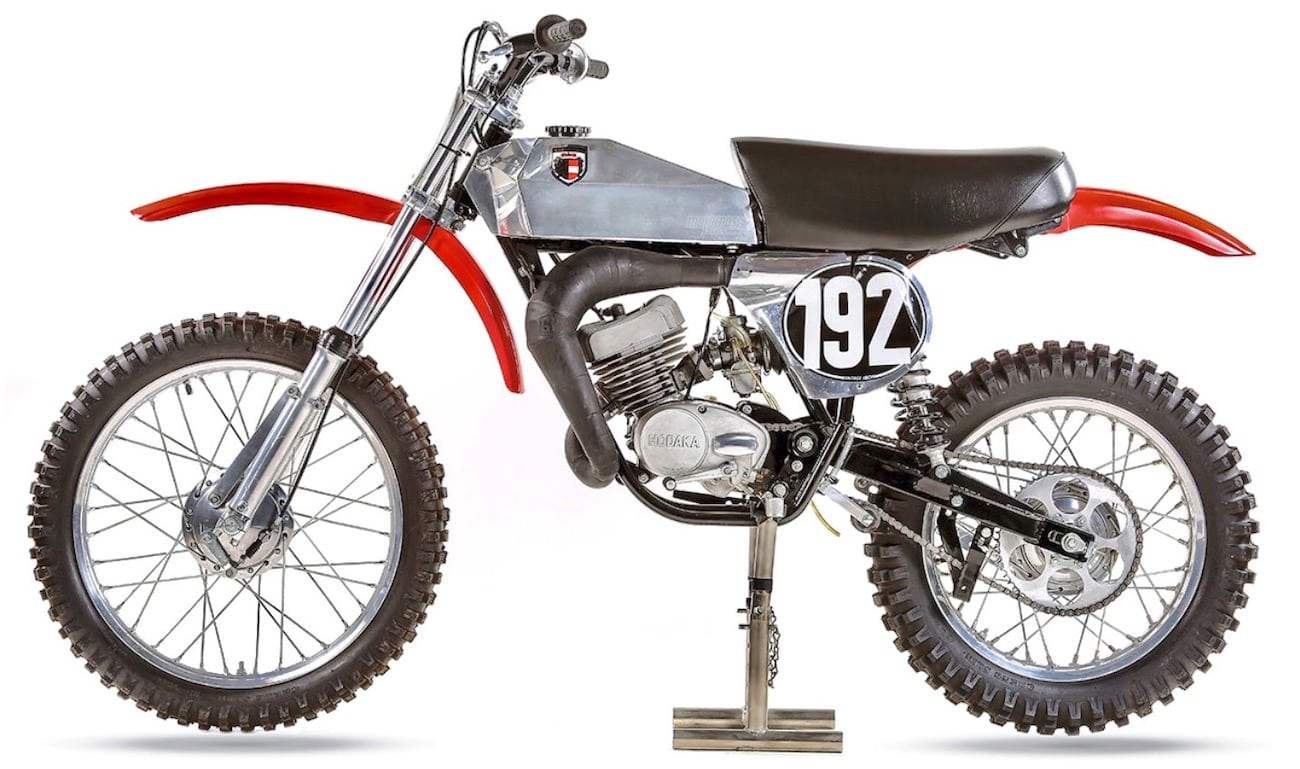




Comments are closed.